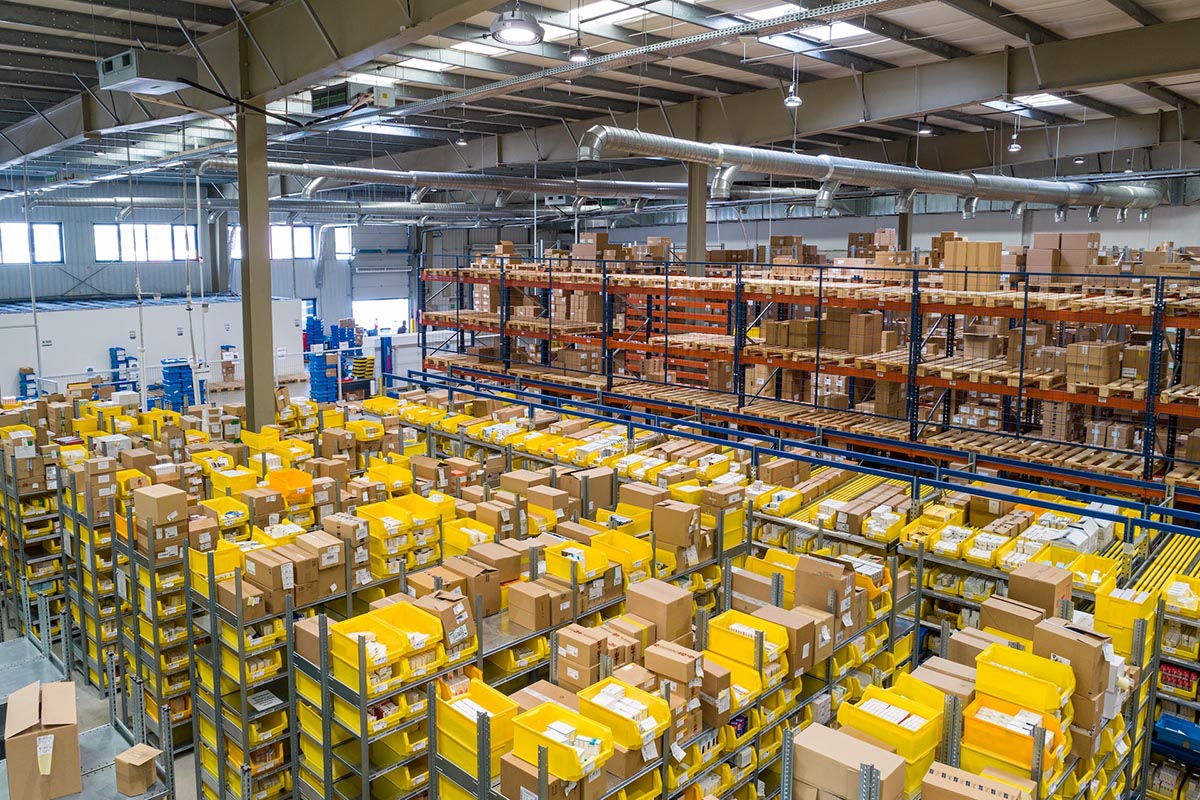
Inventory management is riddled with complexities, demanding innovative and effective solutions. One such solution that is increasingly being adopted is just-in-time warehousing. As businesses evolve and market dynamics shift, the pitfalls of traditional warehousing become more evident, primarily the issues of excessive inventory and the high costs attached to it. In contrast, just-in-time (JIT) warehousing promises to align stock levels to meet real-time demand. This alignment cuts down on unnecessary stock and reduces the risk of stockouts. The core aim is to diminish waste, prevent overstocking, and optimize resource allocation, yielding tangible operational and financial gains. In today's fast-paced business climate, where adaptability and resource efficiency are not just desired but essential, JIT warehousing offers a beacon. This article explores the concept, advantages, and practical application of JIT warehousing in today's dynamic business world.
The Principles Behind JIT Warehousing
Just-in-time warehousing, often called JIT, is built on foundational principles prioritizing efficiency, waste reduction, and real-time responsiveness. At its core, JIT is based on the "Pull" system, a methodology that responds directly to customer demand rather than relying on speculative stocking. This shift from the traditional push-based inventory model is pivotal in reducing overproduction and stockpiling, often leading to significant wastage and increased holding costs. Setting up efficient warehousing systems helps further bolster the JIT approach, enabling streamlined processes that ensure products are stored, managed, and dispatched with minimal delay or redundancy.
Additionally, JIT emphasizes continuous improvement, advocating for regular evaluations and adjustments to the supply chain to remain agile and robust. When implemented effectively, these principles can transform the warehousing function, making it a strategic asset for businesses seeking operational excellence.
Diving Deeper: How Does JIT Warehousing Function?
Understanding the mechanics of just-in-time (JIT) warehousing is essential for grasping its transformative potential. The primary driver behind JIT is the synchronization of supply with real-time demand, ensuring that businesses maintain optimal stock levels without excesses. This approach eliminates the pitfalls of overstocking and minimizes the risks of stock-outs. Beyond this foundational principle, JIT helps you incorporate tailored warehousing solutions customized to meet each business's specific needs. That involves streamlining receiving processes so goods are quickly taken in, stored, and dispatched in line with demand patterns.
JIT also places a significant emphasis on cultivating strong relationships with suppliers. This collaborative approach guarantees timely and consistent deliveries, ensuring the warehousing process remains fluid and responsive. By melding these components—synchronized supply, tailored solutions, and robust supplier relationships—JIT warehousing offers a holistic approach to inventory management.
The Challenges: What to Watch Out For
While just-in-time (JIT) warehousing offers various benefits, it's essential to acknowledge the challenges that might manifest during its implementation and ongoing operations. A chief concern is the risk of stockouts. Given JIT's dependence on accurate demand forecasting, any oversight can result in a shortage of vital products, adversely affecting sales and customer relations. Moreover, JIT's nature means businesses often lean heavily on suppliers. Experience from movers at Excalibur Moving and Storage Maryland shows that any disruption or delay, even outside typical warehousing scenarios, can ripple throughout an entire supply chain, magnifying the significance of reliable partners.
Furthermore, transitioning to JIT is not a simple switch; it's an overhaul of existing methods. Adopting JIT demands comprehensive training sessions for staff, significant changes in existing processes, and, on occasion, modifications to infrastructure. Additionally, the shift requires a cultural adaptation, promoting proactive responses rather than reactive decisions. The intertwined challenges and advantages of JIT necessitate a careful evaluation by businesses. Organizations must balance these elements, ensuring that adopting JIT warehousing makes operational sense and harmonizes with their long-term goals and vision.
Why Business Owners Should Take Note
Understanding the potential of just-in-time warehousing becomes paramount for business owners aiming to streamline operations and maximize profitability. Among the most salient benefits is the reduction in holding costs. By maintaining only the inventory that meets immediate demand, businesses can significantly cut down on storage and stock management expenses. Adaptability is another core strength of JIT, granting businesses the flexibility to respond quickly to market shifts, ensuring they remain competitive and agile.
Another noteworthy advantage is the enhancement of quality control. Since products aren't stored for prolonged periods, the risks of damage or obsolescence are minimized. Furthermore, optimized space utilization is a hallmark of JIT. Instead of vast areas filled with unsold products, spaces are used efficiently, potentially saving warehousing costs. Given these compelling benefits, it's evident why business owners should seriously consider integrating JIT principles into their operations.
Making the Transition: Tips for Success
Transitioning to just-in-time (JIT) warehousing can be a transformative move for businesses, but you must approach the changeover with care and meticulous planning. Effective communication stands as a cornerstone for this transition. Engaging in open dialogues with suppliers ensures that their operations align with the JIT objectives. You also have to ensure that they can consistently meet delivery requirements.
Investment is another crucial area, not merely financial, but in the right tools and technologies. Implementing robust demand forecasting tools can be the difference between JIT success and operational hiccups. Training also plays an indispensable role. Every team member, from warehouse staff to management, should understand JIT principles and the nuances of its execution. A phased approach is often advisable, starting with a pilot or segment of the inventory. That allows businesses to assess and refine their just-in-time warehousing processes before full-scale implementation, ensuring a smoother transition and lasting success.
Is JIT Warehousing Your Next Step?
Finding efficient and adaptable solutions is paramount in today's rapidly evolving business landscape. Just-in-time (JIT) warehousing emerges as a solution, promising a balance between cost-effectiveness and operational agility. Its core tenets of reducing waste, aligning supply with real-time demand, and fostering continuous improvement resonate with businesses seeking streamlined operations. Yet, like all strategies, it's imperative to consider its full spectrum—both the benefits and potential challenges. Adopting JIT is not merely about changing inventory practices but represents a fundamental shift in operational philosophy. It demands commitment, investment, and ongoing evaluation. As businesses look towards the future, considering factors like market volatility, customer expectations, and supply chain complexities, JIT warehousing could answer many of their challenges. If your goal is efficiency paired with adaptability, it might be time to delve deeper into the world of JIT.
For over 30 years, 18 Wheels Logistics has strived to be the most customer-centric trucking, warehousing, and logistics company around. Based in Vancouver, British Columbia, Canada, 18 Wheels relies on experience and integrity to make customers happy and remain on the cutting edge of shipping and logistics management.
If you have any questions about this article or you would like to talk to us about your shipping needs, please call us at (604) 439-8938.
